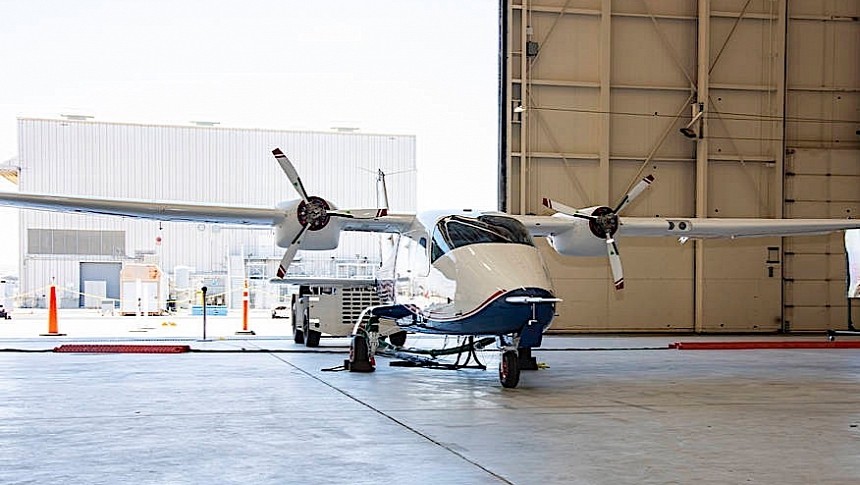It was back in late 2019 when we learned the first in-depth details for an experimental electric aircraft that was to bring about a new era of air mobility. The project had all the components to succeed, including the involvement of NASA, and everybody had their hopes up. And now we learn of the project coming to an end.
At the core of the idea was an Italian-made Tecnam P2006T aircraft, modified to use an electric propulsion system instead of the factory-equipped one. The platform was to be gifted with no less than 12 60-kilowatt motors, six on each wing – that would have been more than enough to allow the machine to reach a maximum altitude of 14,000 feet (4,300 meters) and cruise at 172 mph (277 kph).
A quick look at how the Tecnam (codename X-57 Maxwell) looks now (main photo of this piece) makes it painfully clear that didn't happen. What's more, NASA said last week it is pulling the plug on the project in September, dropping at the same time any plans for a test flight until then.
What that means work on the electric aircraft will end, even if the agency expects documentation and close-out activities to continue for a few more months. Somewhat contrary to what we were led to believe, NASA says "the objective was not to develop a prototype, but to develop a test platform for technologies and design methods."
So, what happened? No specifics were provided, but we do get bits of info about challenges encountered over the past few years, including "mechanical issues late into its lifecycle and a lack of availability of critical components required to develop experimental hardware."
The years spent on developing the Maxwell led however to "hundreds of lessons learned" and “revolutionary development in areas ranging from battery technology to cruise motor control design."
Although an exact picture of these lessons is not yet public, we do have some info on the most notable successes of the project. The first such breakthrough would be the fact NASA found out how to keep the temperature of the lithium-ion batteries to acceptable levels while they discharge.
Then, the cruise motor controllers, which convert battery energy into power for the motors, have been designed in such a way that "they do not generate excessive heat and can be cooled off by the air flowing through the motor."
New inverters were designed to be in line with mass and thermal requirements, and so were filters meant to fight electromagnetic interference.
NASA and the team who worked on the project plan to share all their findings with the international community, meaning that even if the X-57 project went bust, lessons learned with it might indeed help electric aircraft become a reality someday. Whether if and when that will actually happen in the real world remains to be seen.
A quick look at how the Tecnam (codename X-57 Maxwell) looks now (main photo of this piece) makes it painfully clear that didn't happen. What's more, NASA said last week it is pulling the plug on the project in September, dropping at the same time any plans for a test flight until then.
What that means work on the electric aircraft will end, even if the agency expects documentation and close-out activities to continue for a few more months. Somewhat contrary to what we were led to believe, NASA says "the objective was not to develop a prototype, but to develop a test platform for technologies and design methods."
So, what happened? No specifics were provided, but we do get bits of info about challenges encountered over the past few years, including "mechanical issues late into its lifecycle and a lack of availability of critical components required to develop experimental hardware."
The years spent on developing the Maxwell led however to "hundreds of lessons learned" and “revolutionary development in areas ranging from battery technology to cruise motor control design."
Although an exact picture of these lessons is not yet public, we do have some info on the most notable successes of the project. The first such breakthrough would be the fact NASA found out how to keep the temperature of the lithium-ion batteries to acceptable levels while they discharge.
Then, the cruise motor controllers, which convert battery energy into power for the motors, have been designed in such a way that "they do not generate excessive heat and can be cooled off by the air flowing through the motor."
New inverters were designed to be in line with mass and thermal requirements, and so were filters meant to fight electromagnetic interference.
NASA and the team who worked on the project plan to share all their findings with the international community, meaning that even if the X-57 project went bust, lessons learned with it might indeed help electric aircraft become a reality someday. Whether if and when that will actually happen in the real world remains to be seen.














